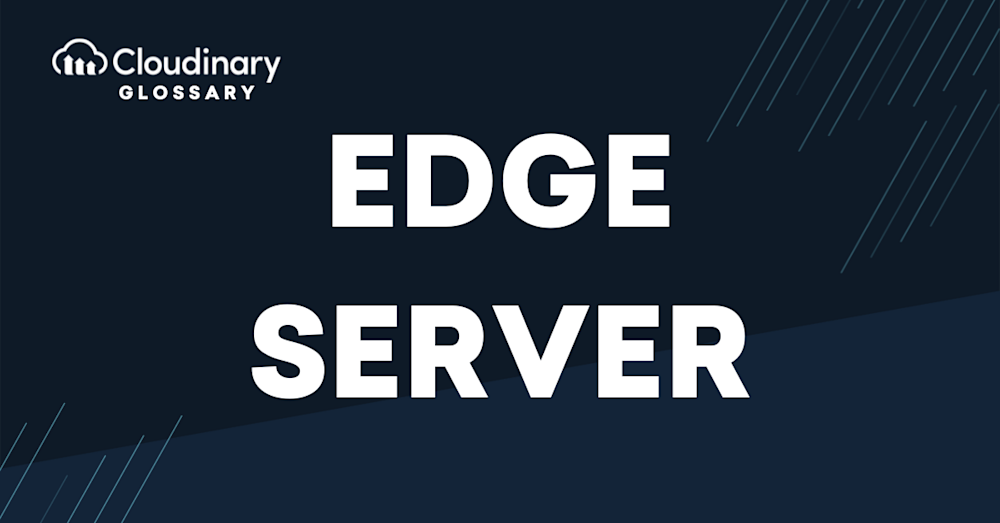What Is An Edge Server?
Edge servers are specialized hardware that perform various functions, including networking, storage, computing, and security. This versatility makes them ideal for processing data locally close to the end-user, enabling real-time decision-making and optimizing data processing.
Its primary function is to cache and deliver content to users more efficiently, thus reducing latency and improving the overall performance of a website or application. By processing user requests closer to their geographical location, edge servers help to minimize the time it takes for data to travel between the user’s device and the server, resulting in faster load times and a better user experience.
In addition to content caching, edge servers can handle tasks such as load balancing, security, and traffic management. By offloading these responsibilities from the origin server, edge servers help to reduce server load and protect the core infrastructure from potential threats.
The Benefits of Edge Servers
Edge servers provide numerous advantages that contribute to the overall performance, security, and reliability of your website or application. By incorporating edge servers into your infrastructure, you can expect the following benefits:
- Reduced latency. By processing requests closer to users, edge servers minimize the time it takes for data to travel, resulting in faster load times.
- Improved content delivery. Edge servers cache and deliver content more efficiently, ensuring a seamless experience for users.
- Enhanced security. By acting as a protective barrier between users and the origin server, edge servers help mitigate potential threats and safeguard your core infrastructure.
- Load balancing. Edge servers distribute traffic evenly across your network, preventing bottlenecks and ensuring optimal performance.
- Scalability. With edge servers in place, your infrastructure can better handle increased traffic loads, allowing for seamless growth and expansion.
Additionally, edge servers can significantly reduce bandwidth requirements and increase efficiency in business operations. Located outside traditional data centers, they can be strategically placed in various locations, including on-premises, regional areas, internet exchange points, manufacturing sites, and healthcare settings, catering to specific business needs and physical environments.
How Do Edge Servers Work?
Edge servers function as a crucial component in content delivery networks (CDNs) and work to optimize the distribution of content to end users. The process of delivering content through edge servers typically involves the following steps:
- User request: When a user requests content from your website or application, the request is directed to the nearest edge server based on their geographical location.
- Content caching: The edge server checks if the requested content is already cached. If it is, the server delivers the content to the user immediately.
- Fetching from origin server: If the content is not cached, the edge server fetches it from the origin server, caches it for future requests, and delivers it to the user.
- Load balancing: Edge servers intelligently distribute traffic among multiple servers, ensuring that no single server becomes overwhelmed with requests.
- Security measures: Edge servers can also implement security features like DDoS protection and web application firewalls to protect your infrastructure from potential threats.
Edge servers excel in processing requests faster than centralized servers by processing raw data and returning content to client machines rather than sending unprocessed data to a data center. This capability is particularly valuable for processing time-sensitive data.

Edge Servers vs. CDNs
While “edge servers” and “CDNs” are often used interchangeably, it’s essential to understand the distinction between them. Edge servers are the individual components within a CDN that cache and deliver content to users based on their geographic location. They act as intermediaries between the users and the origin server, helping to reduce latency and improve content delivery efficiency.
On the other hand, a CDN is a network of these edge servers strategically distributed across various geographical locations. The primary purpose of a CDN is to optimize content delivery by routing user requests to the nearest edge server, thus minimizing the distance data must travel. In essence, a CDN is a collection of edge servers working together to enhance the performance, security, and reliability of websites and applications. By understanding the relationship between edge servers and CDNs, you can better appreciate their crucial role in delivering a seamless and satisfying user experience.
Final Thoughts
By incorporating edge servers into your infrastructure, you can reap the benefits of reduced latency, improved content delivery, enhanced security, load balancing, and scalability. As the demand for high-quality content and seamless user experiences continues to grow, leveraging edge servers and CDNs is essential for staying competitive and maintaining a strong online presence.
If you’re looking to optimize your website’s performance and content delivery, Cloudinary can help. Our powerful platform offers a comprehensive suite of tools and services, including media caching, image, and video optimization, and seamless integration with leading CDNs.
Don’t wait any longer – start optimizing your content delivery with Cloudinary today!
Check Out Our Tools That You May Find Useful:


